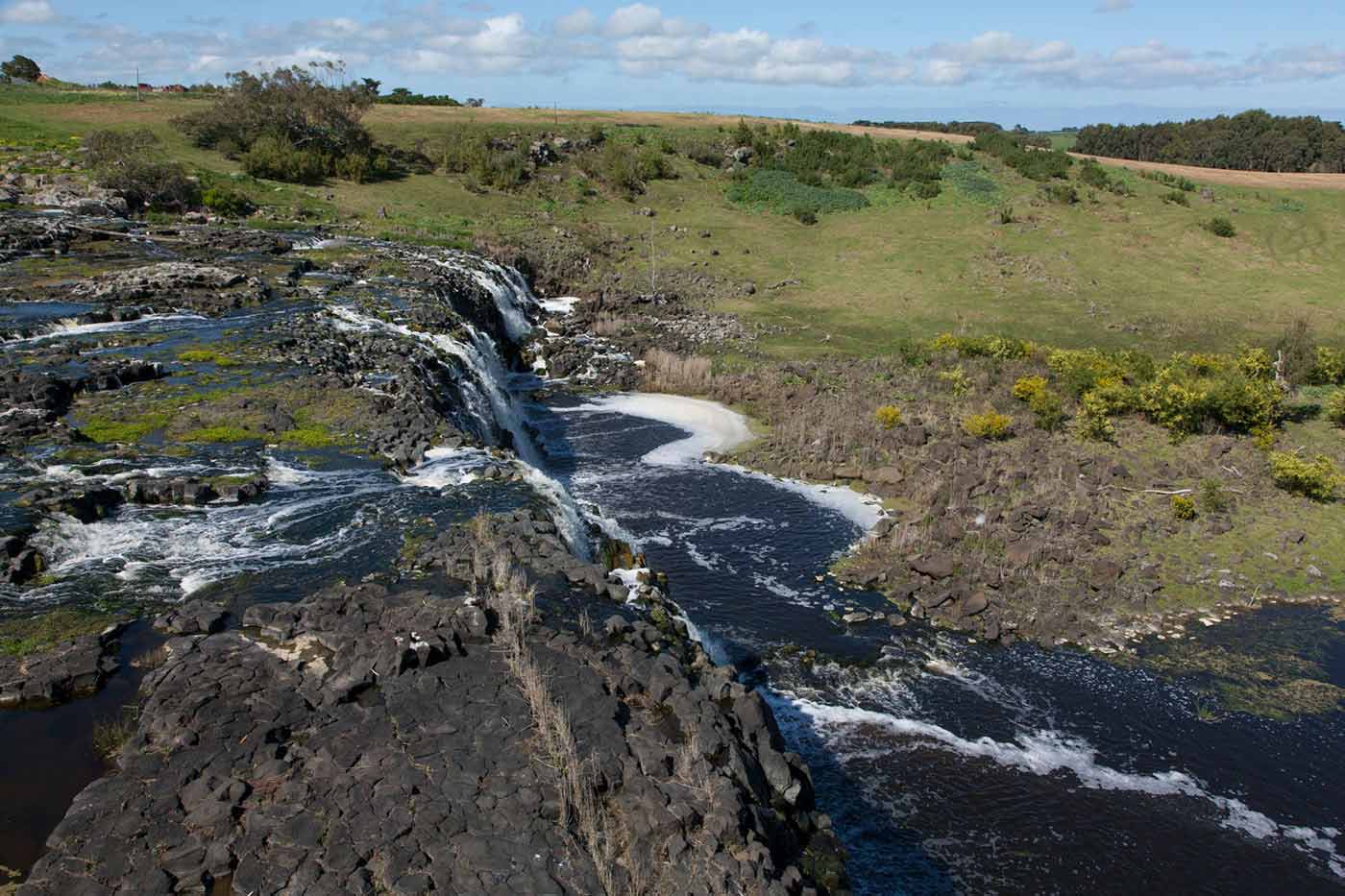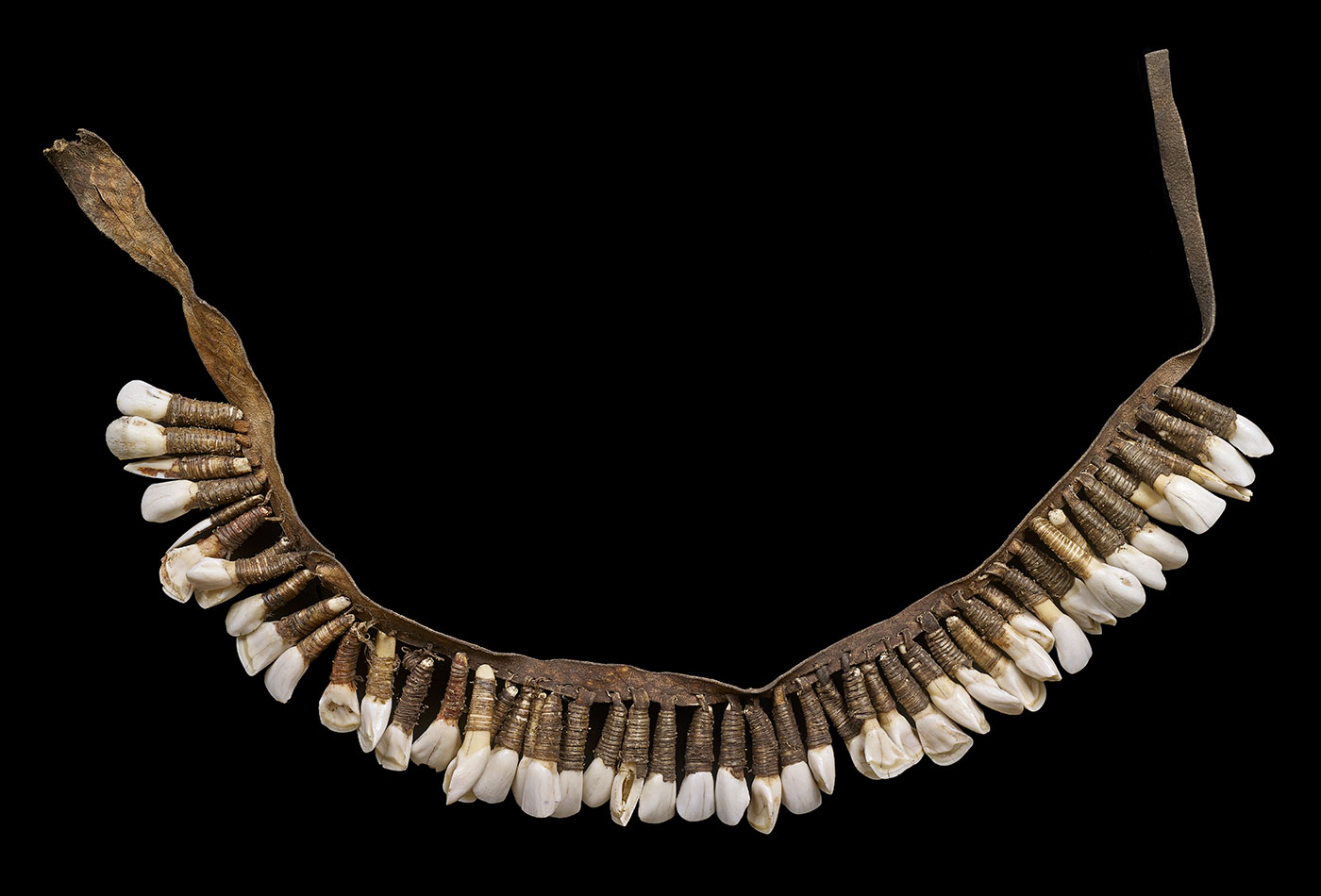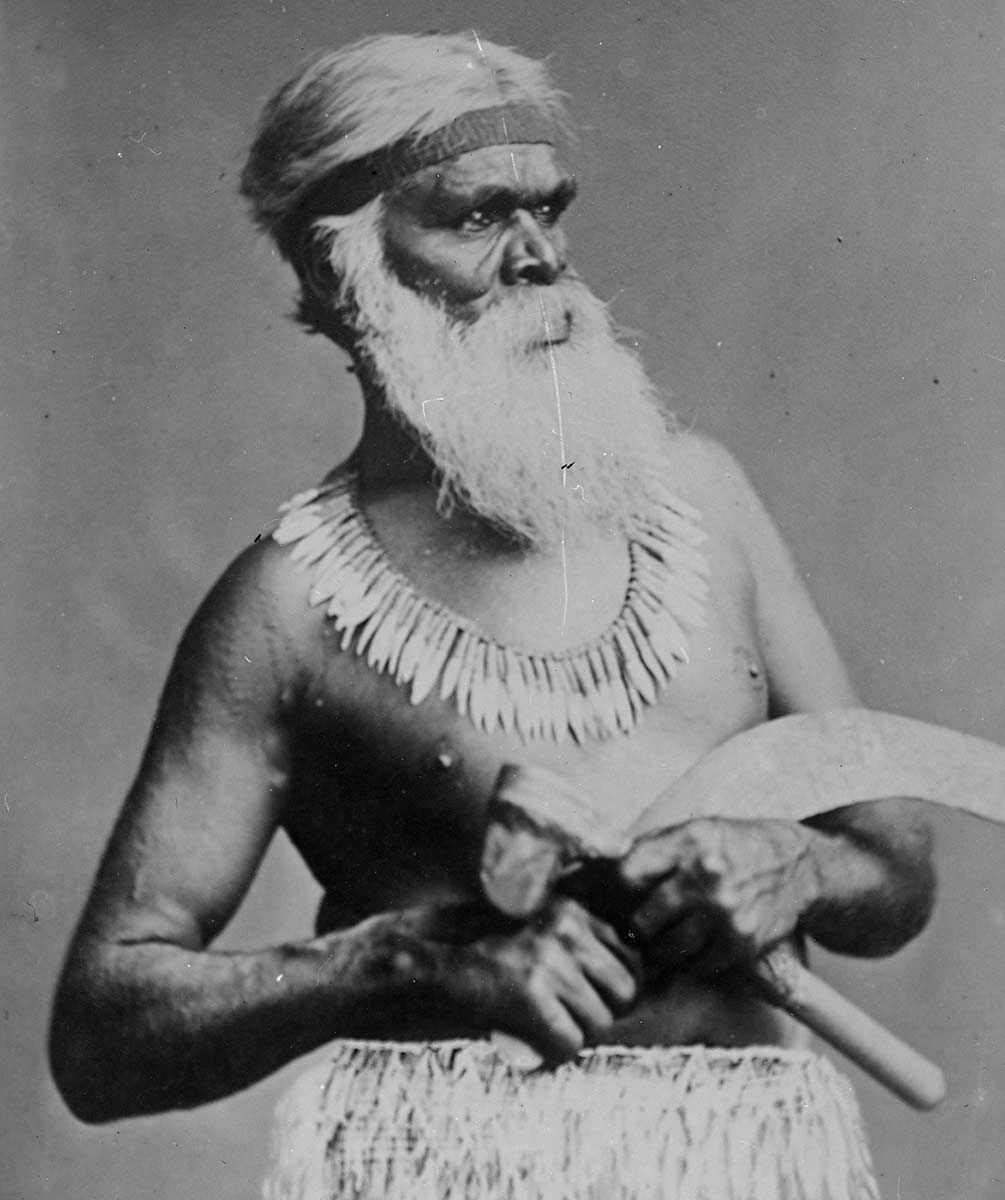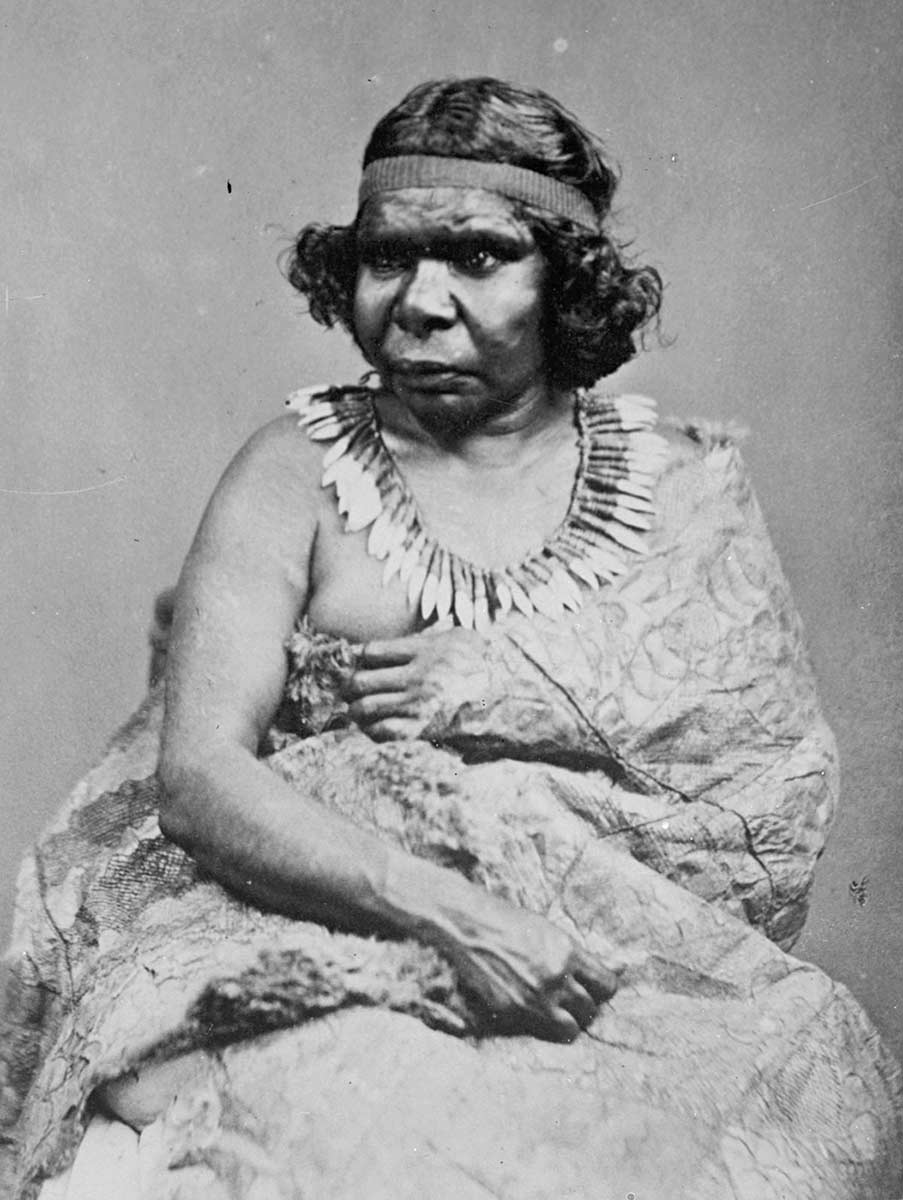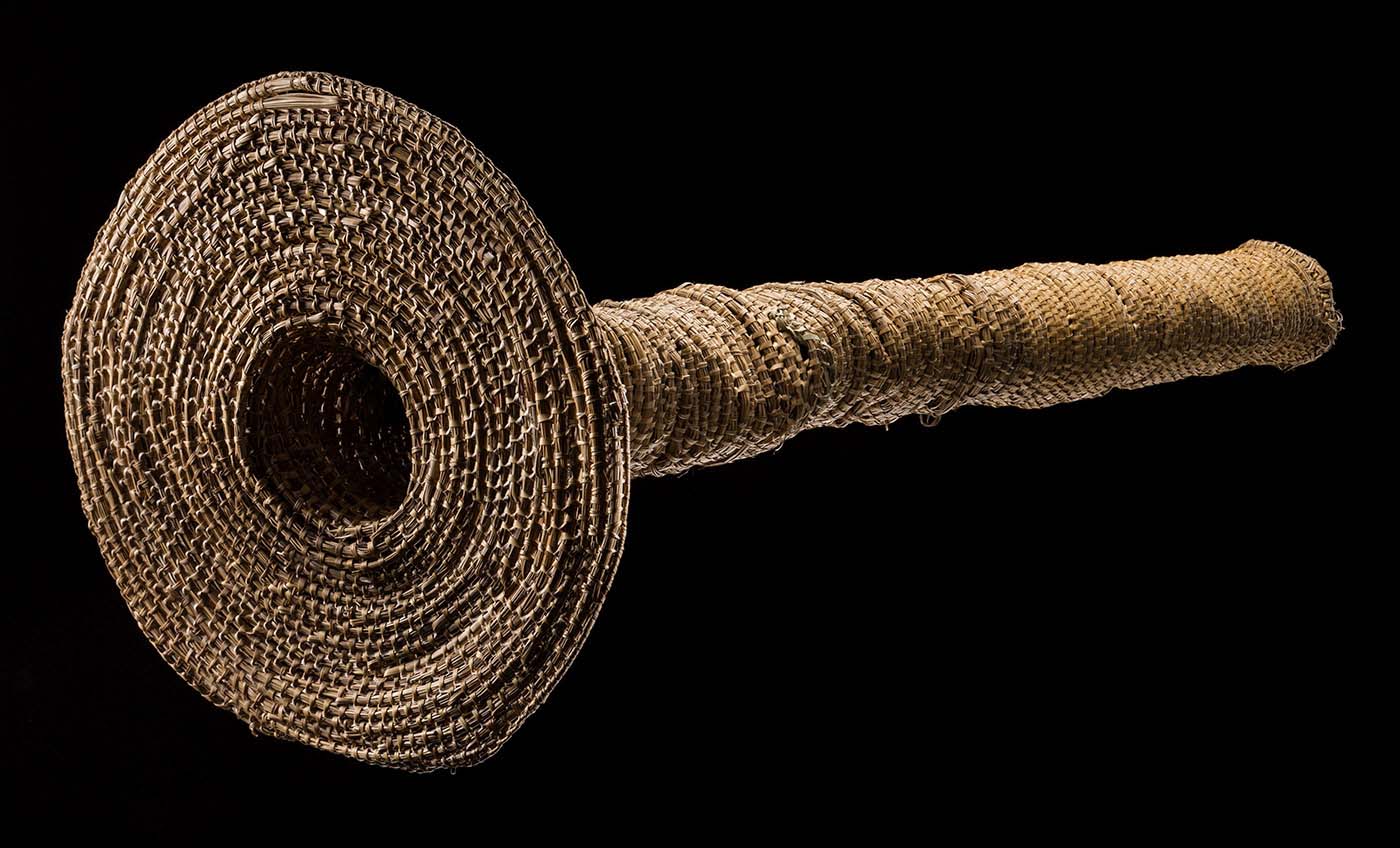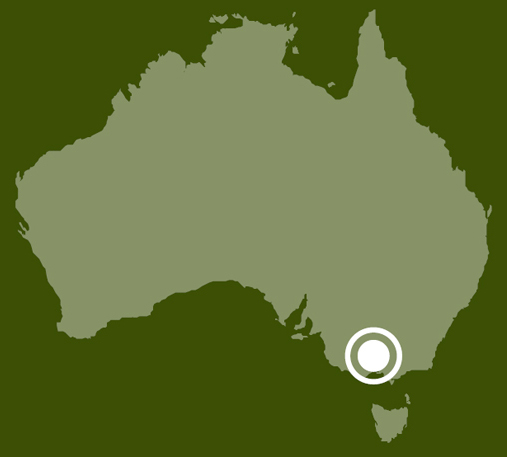
Gunditjmara and Kirrae Whurrong country
For thousands of years, Gunditjmara and Kirrae Whurrong peoples farmed kooyang (eels) through engineering a complex system of channels, dams and weirs.
Explore how their cultural connections are still alive today through harvesting eels and traditional weaving.
Setting the scene
Norman Bell, Gunditjmara man, 2014:
We are doing the stuff that we were doing hundreds and thousands of years ago. Keeping our land strong.
Gunditjmara and Kirrae Whurrong peoples of south-west Victoria keep connections to their countries alive. Significant places such as the Framlingham Forest and the 6800-year-old network of eel channels will be there for the future because Gunditjmara and Kirrae Whurrong people have fought for them.
Old objects, like the kangaroo tooth necklace, are also valued for the history they hold.
Thomas Day, Gunditjmara and Yorta Yorta man, 2014:
When I see these old artefacts ... I get a glimpse of something — of the past.
Augustus Strong, who took up land at St Marys, collected ceremonial and hunting objects in the early 1840s. He left no records of his relationship with the local Aboriginal people. People today link these objects to the conflict with colonists west of St Marys, known as the Eumarella War.
Geoffrey ‘Possum’ Clark-Ugle, Peek Whurrong/Kirrae Whurrong/Thap Whurrong man, 2014:
These artefacts show it was hard in invasion times for [the British] to come here without our people putting up a fight … That fight still continues ... for that recognition of who we are and where we come from.
Wallaby tooth necklace
The teeth in this necklace are those of a swamp wallaby (Wallabia bicolor). Aboriginal people throughout Aboriginal Australia have used kangaroo and wallaby teeth for both decorative and functional purposes, such as the point at the end of a spear-thrower.
Denise Lovett, Gunditjmara elder, 2014:
With the wallaby teeth [necklace] ... It’s a strange feeling, that you come back with objects that have been held off country for 200 years and you say, ‘Look at these, these are yours, but not yours’. Even physically they are not ours because they haven’t been given back to us. We don’t have the stories that went with them.
Thomas Day, Gunditjmara and Yorta Yorta man, 2014:
When I go on country I’m looking for a small window in time, to let us look into the past, to see what it may have looked like once. That makes me happy. When I see these old artefacts I feel the same. I get a glimpse of something. Of the past.
Woven eel trap
Gunditjmara are working today to restore some of the landscape engineered by their ancestors for the management and harvesting of kooyang (eels). This trap has been used in recent times for catching eels. You can see the areas where the trap has been repaired after being damaged during use.
Aunty Eileen Alberts, Gunditjmara elder, 2013:
I guess since 1788, we have been doing this adaptation all the time ... not a compromise but a new way of doing an old thing. The old ways won’t sustain a future for you, but you need to practise your culture to truly be who you are.
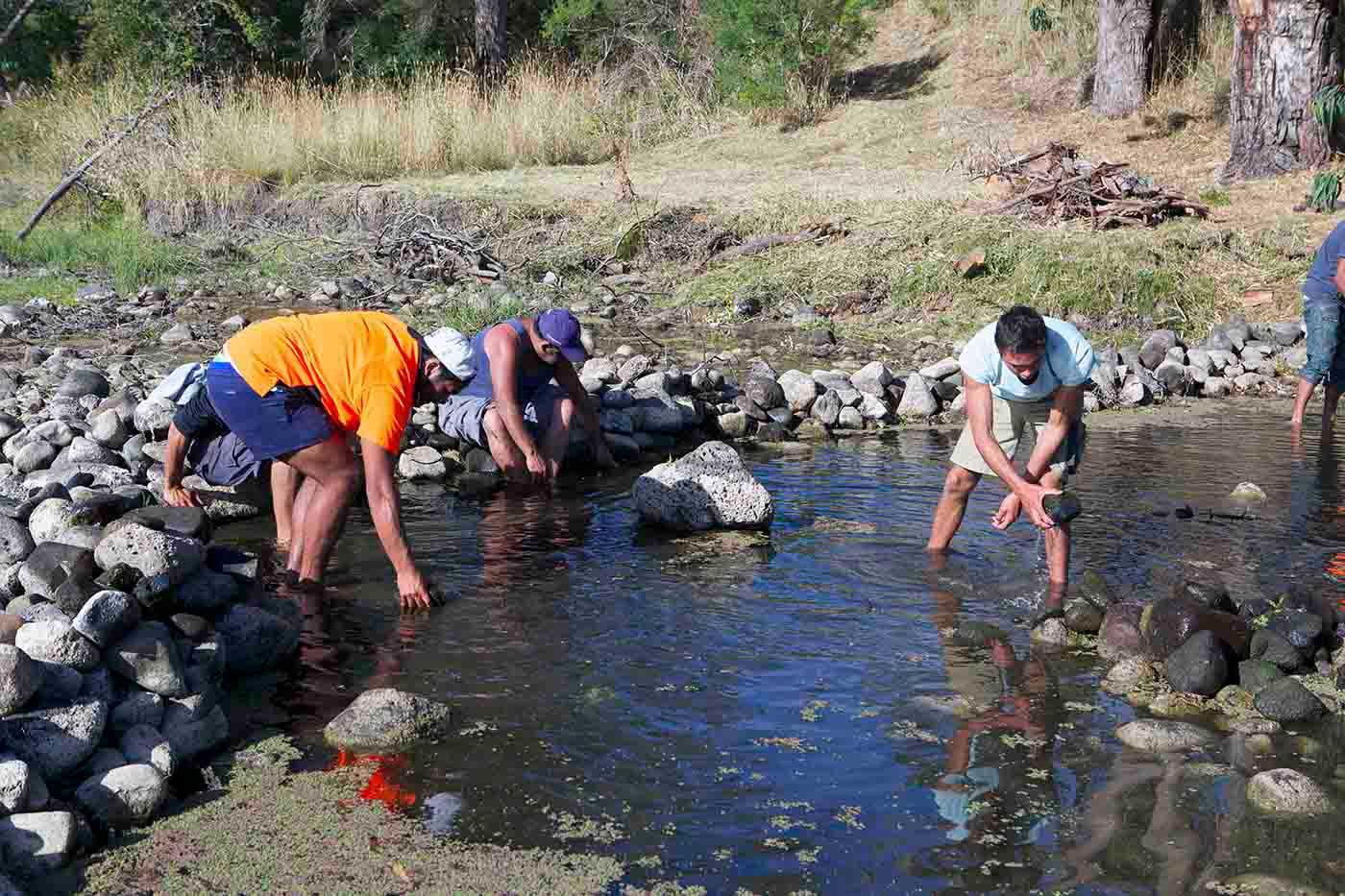
Video stories
Learn about an ancient weaving tradition
Watch Gunditjmara elder Aunty Eileen Alberts describing how she learned how to weave.
Activity: Have a class discussion about why Aunty Connie Hart was reluctant to teach weaving.
What do you know about Warrnambool?
More activities
Look at the images above, then create a model or draw a picture of an eel trap.
Activity:
Gunditjmara elder Aunty Eileen Alberts said: ‘I guess since 1788, we have been doing this adaptation all the time … not a compromise but a new way of doing an old thing. The old ways won’t sustain a future for you, but you need to practise your culture to truly be who you are.’
Find out about some ‘old ways’ in your family. It might be a skill or trade that your parents, grandparents, aunt, uncle or an older friend learned when they were young. Is this skill still in use? Has it been adapted, lost or replaced over time?
Activity:
Visitors responded to questions as part of our Encounters exhibition on show in Canberra. Look at the responses to the question ‘What story or skill has been passed down to you?’ on our Articulate website. Pick one response that you find particularly interesting or surprising. Explain why.
Gunditjmara and Yorta Yorta man Thomas Day said: ‘When I go on country I’m looking for a small window into the past, to see what it may have looked like once.’
Chose an old object that interests you. It might be something at home, at school or in your community. Investigate its story. What is it made of? How is it made? Who used it? When? Why?
Using the results of your research create your own ‘window in time’. Paint, draw, or write your response to create a glimpse of the past for your reader or viewer.
Explore more on Community stories
